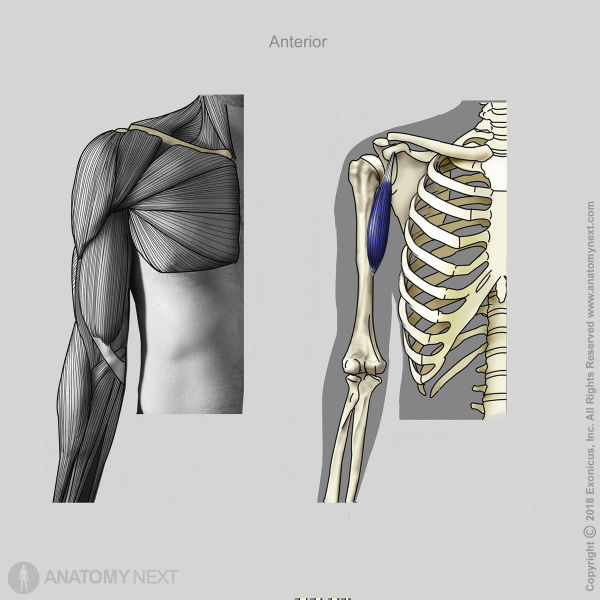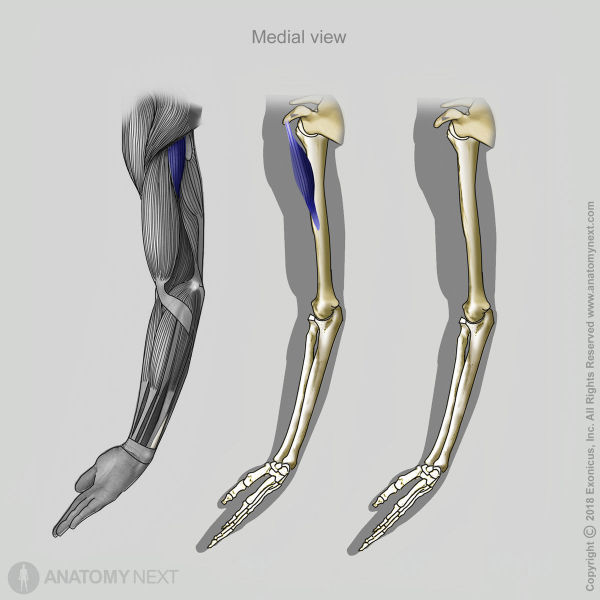- Anatomical terminology
- Skeletal system
- Joints
- Muscles
- Head muscles
- Neck muscles
- Muscles of upper limb
- Muscles of pectoral girdle
- Muscles of shoulder region
- Muscles of upper arm
- Anterior compartment
- Posterior compartment
- Muscles of forearm
- Muscles of hand
- Thoracic muscles
- Muscles of back
- Muscles of lower limb
- Heart
- Blood vessels
- Lymphatic system
- Nervous system
- Respiratory system
- Digestive system
- Urinary system
- Female reproductive system
- Male reproductive system
- Endocrine glands
- Eye
- Ear
Coracobrachialis
The coracobrachialis (Latin: musculus coracobrachialis) is a slender, flat muscle of the upper limb. It is located in the anterior compartment of the upper arm together with the biceps brachii and brachialis muscles. The coracobrachialis stretches between the scapula and humerus. This muscle is one of the arm flexors.
| Coracobrachialis | |
| Origin | Coracoid process of scapula |
| Insertion | Anteromedial surface of humeral body |
| Action | Flexion, adduction and internal rotation of arm |
| Innervation | Musculocutaneous nerve (C5 - C7) |
| Blood supply | Brachial, anterior humeral circumflex and thoracoacromial arteries |

Origin
The coracobrachialis muscle originates from the coracoid process of the scapula.

Insertion
The coracobrachialis inserts on the anteromedial surface of the humeral body.
Action
The coracobrachialis muscle provides flexion, adduction and internal (medial) rotation of the arm at the shoulder joint.
Innervation
The coracobrachialis is innervated by the musculocutaneous nerve (C5 - C7) that is a branch of the brachial plexus.
Blood supply
The coracobrachialis muscle primarily receives arterial blood supply from the muscular branches of the brachial artery. It is also supplied by the anterior humeral circumflex and thoracoacromial arteries. Both are branches of the axillary artery.